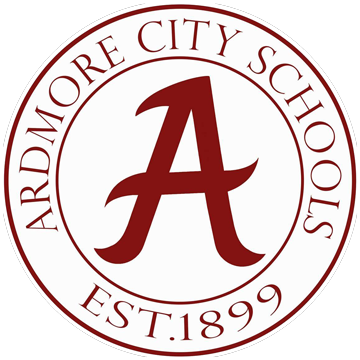General Information
Take Two Referral Procedure
Take Two is a referral based school. All students must be enrolled in his/her home school to be eligible for placement at Two Two.
Take Two serves five area school districts: Ardmore, Davis, Marietta, Plainview, Thackerville and Turner. In addition, the student must meet the criteria for at risk as determined by the State of Oklahoma.
http://ok.gov/sde/alternative-education-programs
Once the student has been identified as at risk by the student, parent, principal and/or school counselor a referral to Take Two is completed and submitted. If it is determined that Take Two can meet the students academic, behavioral, life skill, vocational and instructional needs then a meeting will take place with the student, parent and director.
The home school will be notified upon acceptance.
Philosophy of Care
Quality child-care is something the American people have a right to demand. But many people have given up on today's children and families. Take Two Academy has not. Our philosophy combines state-of-the-art, technology-based services to meet the needs of troubled children and families today.
Each program utilized by the Take Two Academy focuses on two essential goals: building relationships and teaching skills. Borrowing from our friends at Father Flanagan's Boys Town, we believe these two qualities are the hallmarks of healing and hope. At this time the complete array of alternative education services offered by Take Two include the following:
Take Two Academy - an alternative school for students from grade 7 - 12
Take Two Social Services - a licensed professional counselor, an interventionist/director and three Ardmore City School board approved counseling agencies.
Even Start Parenting Classes
Program Goals for Students at Risk
Students served in Oklahoma's Alternative Education programs are at risk for high school failure for a variety of reasons which may include academic deficiency, behavioral difficulties, excessive absences, pregnancy or parenting, adjustment problems, or juvenile justice involvement. Alternative Education programs are specifically tailored to meet the needs of students who may be struggling with poverty, substance abuse, family dysfunction, or psychological or physical trauma. Some of the unique features of Take Two Academy include:
Flexible scheduling
Small class sizes
Youth and family involvement in goal-setting
Learning activities based upon students' interests and abilities
Career skills training
Service learning opportunities
Innovative instructional techniques
Open communication and positive relationships with faculty
Assistance with entrance to college or vocational training
The goal of each of our programs is to provide maximum quality care.
To accomplish this goal, five essential components must be in place.
The program and its environment must be safe. Policies and procedures must be in place and adhered to at all times.
The children/youth must be happy. Our staff and members are mandated to create and maintain a healthy, emotionally enriching atmosphere for each and every youth.
The children need to get better. As our Boys Town mentors state, "we believe in outcomes, not rhetoric".
Programs have to be family style and family based. Staff members must create family skills and family values in order for children to learn responsible behavior. Our goal with children whose families need assistance, is to provide the methods to create positive change in relationships.
Programs must be replicable. Each program must be able to be taught to others and repeated time and again. Take Two has been replicated by other alternative school systems in the State and our approach has more than a dozen other communities coming to see how we operate.
Definition of At Risk Student
At risk children and youth are individuals whose present or predictable status (economic, social-cultural, academic, and/or health) indicates that they might fail to successfully complete their secondary education and acquire basic life skills necessary for higher education and/or employment. More specifically, children and youth may be deemed at risk if:
They are a member of a household or family whose income is at or below the poverty level under criteria used by the United States Bureau of Census; or
They have not made substantial progress in mastering basic skills that are appropriate for students of their age; or
They have grades that consistently indicate major underachievement; or
They have been determined to be at risk based on assessment by school staff familiar with the students' health, social, or family status as these influences may be impairing the students' success in school. Influences may include but are not limited to:
Evidence of abuse of the student;
The students' use of alcohol or drugs;
Pregnancy; or Attempted suicide.
Program Requirements
All of Oklahoma's Statewide Alternative Education Academy Programs must provide the following 17 Research-Based Components according to 70 O.S. § 1210-568:
Student-teacher ratios conducive to effective learning for at-risk students;
Appropriate structure, curriculum, interaction, and reinforcement strategies for effective instruction;
An intake and screening process to determine eligibility of students;
Appropriately certified teaching faculty;
Teaching faculty with experiences or personal traits that qualify them for successful work with at-risk students;
Collaboration with state and local agencies;
Courses that meet the curricular standards adopted by the Oklahoma State Board of Education and additional remedial courses;
Individualized instruction;
Clear and measurable program goals and objectives;
Counseling and social service components;
Graduation plan for each student;
Life skills instruction;
Opportunities for arts education;
A proposed annual budget;
An evaluation component including an annual written self-evaluation;
Service to students in Grades 6-12 who are most at risk of not completing high school for reasons other than disability; and
Opportunities for student participation in vocational programs and extra-curricular activities, such as athletics, band, and clubs.
For more information contact:
Oklahoma State Department of Education, Alternative Education Office, (405) 522-0276
